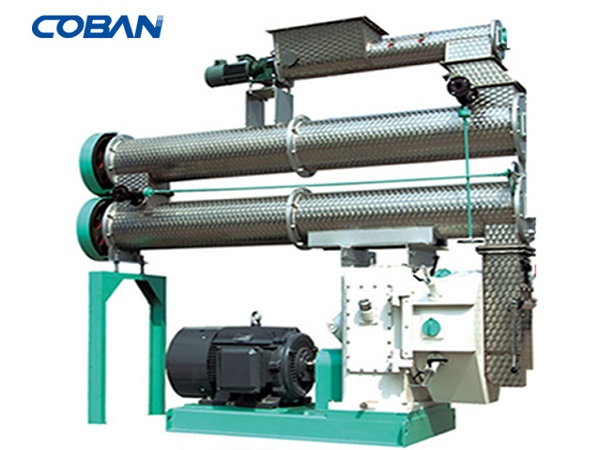Working Principle of Poultry Feed Pellet Machine
The working principle of the poultry feed pellet machine is mainly to strongly squeeze the material through the ring die and the pressure roller to shape the powder. The main components of the poultry feed pellet machine include the feeding device, the pressing device, the regulating device, the cooling device and the electronic control system.
- Cattle feed production line procurement in Philippines
- Cattle Feed Production Line Manufacturer in Philippines
- Cattle Feed Production Line Supplier in Philippines
- Cattle Feed Production Line Price in Philippines
- Cattle Feed Production Line Sales in Philippines
- Maintenance Methods for Cattle Feed Production Line in Philippines
- Installation Process of a Cattle Feed Production Line in Philippines
- Structure composition of cattle feed production line in Philippines
- Main advantages of Cattle Feed Production Line in Philippines
- Main functions of cattle feed production line in Philippines
Working Principle of Poultry Feed Pellet Machine
The working principle of a poultry feed pellet machine involves several key steps and components:


Raw Material Preparation
The process begins with the grinding of raw materials such as corn, soybean meal, straw, grass, and rice husks to achieve a suitable particle size for processing.
Mixing
The ground raw materials are then mixed in specific proportions to ensure a balanced nutritional composition of the feed. This step can be done manually or with automated mixing equipment.
Conveying
The mixed raw materials are conveyed to the feed pellet machine’s feed inlet using conveying equipment, such as a screw conveyor.
Pressing Unit
Once the raw materials enter the feed pellet machine, they are compressed by the pressing unit, which can be a ring die or flat die. The ring die pellet mill uses a rotating ring die and press rollers to shape the material, while the flat die pellet mill uses a flat mold and press rollers for compression.
Main Components
The feed pellet machine primarily consists of a feeding device, pressing unit, adjustment mechanism, cooling system, and an electrical control system.
Ring Die and Press Rollers
The material is shaped by the intense compression of the ring die and press rollers. The ring die is connected to a reducer, which is driven by an electric motor to rotate. The press rollers rotate around their own axis, with their rotational power indirectly derived from the electric motor.
Under the pressure of the press rollers and the die, the material is extruded into a long strip through the die holes and is cut into cylinders of the desired length by a cutter. The position of the cutter can be adjusted to achieve different lengths of pellets.


Conditioning Process
After the powdered material is demagnetized by a magnetic separator, it is fed to the conditioner via an infinitely variable speed screw feeder. Inside the conditioner, the powder is thoroughly mixed with steam, molasses, and fats, achieving a moisture content of 15% to 19% and a temperature of 80 to 90°C.
The material is then distributed by a distributor to the pressing chamber surrounded by the ring die, and with the help of gravity, the centrifugal force generated by the rotation of the ring die, and the action of the feeding scraper, it is evenly fed into the two compression zones within the ring die, i.e., the wedge-shaped space formed by the two press rollers and the ring die.
Cutting
The feed pellets, once formed, are processed by a cutting device to achieve a specific length. This ensures that the pellets are uniform, which is crucial for the ease of consumption by animals.
Cooling
After the pellets are cut, they are subjected to a cooling process using systems like cooling fans. This cooling effectively reduces the moisture content in the pellets, which in turn increases their hardness and enhances their stability for storage.
Screening
The cooled pellets are screened to ensure uniform particle size, with any out-of-specification pellets being recycled for further processing.
Packaging
Finally, the qualified pellet feed is packaged by a packaging machine for easy storage and transportation.
Automation Control
Modern feed pellet machines are typically furnished with sophisticated automated control systems. These systems have the capability to monitor and adjust a range of production parameters on-the-fly, which is crucial for maintaining both production efficiency and the quality of the end product.
The poultry feed pellet machine transforms feed raw materials into uniform and appropriately dense pellets. This process, which involves physical compression and proper thermal treatment, produces pellets that are ideal for poultry feeding. As a result, it contributes to enhanced feed utilization and increased breeding benefits.








